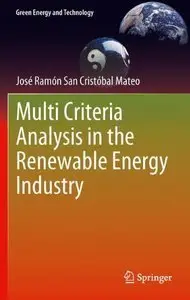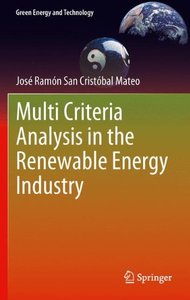José Ramón San Cristóbal Mateo, "Multi Criteria Analysis in the Renewable Energy Industry"
Sp nger | 2012 | ISBN: 144712345X | 114 pages | PDF | 1 MB
Sp nger | 2012 | ISBN: 144712345X | 114 pages | PDF | 1 MB
Decision makers in the Renewable Energy sector face an increasingly complex social, economic, technological, and environmental scenario in their decision process. Different groups of decision-makers become involved in the process, each group bringing along different criteria therefore, policy formulation for fossil fuel substitution by Renewable Energies must be addressed in a multi-criteria context. Multi Criteria Analysis in the Renewable Energy Industry is a direct response to the increasing interest in the Renewable Energy industry which can be seen as an important remedy to many environmental problems that the world faces today. The multiplicity of criteria and the increasingly complex social, economic, technological, and environmental scenario makes multi-criteria analysis a valuable tool in the decision-making process for fossil fuel substitution. The detailed chapters explore the use of the Multi-criteria decision-making methods and how they provide valuable assistance in reaching equitable and acceptable solutions in the selection of renewable energy projects. Common multi-criteria decision-making methods including Analytical Hierarchy Process, PROMETHEE, ELECTRE, TOPSIS and VIKOR are explored in detail with an application case of each method included at the end of each chapter. As such, Multi Criteria Analysis in the Renewable Energy Industry is an ideal resource for those groups of individuals, institutions and administration such as local authorities, academic institutions, environmental groups, and governments that, through their priorities and evaluation systems, have interests at stake and directly or indirectly influence the decision-making process.



